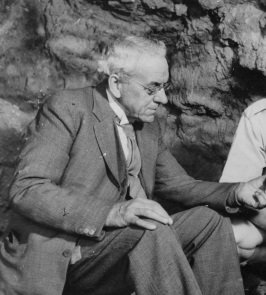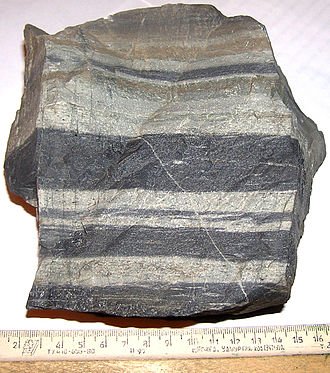
Dear Readers
In this series of posts we will be covering the Later Stone Age of South Africa, I encourage you to please read the Introduction Post to this series if you haven't already done, just so you will be able to follow along with the terminology being used.
The Later Stone Age in South Africa: Historical Background
Historical Background
In 1929, Goodwin and Van Riet Lowe divided the Stone Age into Earlier, Middle and Later Stone Ages. They believed that the European terms for local expressions of Stone Age technology and cultural systems were not appropriate in the South African context.
Van Riet Lowe, a civil engineer, encounted numerous surface archaeological sites during the course of his work. Goodwin was employed at the University of Cape Town in the Department of Ethnology; he was also involved in curating the archaeological collection of South African Museum. He was familiar with stone artefacts from caves and rock shelters and from surface sites in the Cape, whereas Van Riet Lowe had an extensive knowledge of the sites in the Free State. After discussions with other active field workers, Van Riet Louw and Goodwin decided on a threefold division, namely: Early (ESA), Middle (MSA) and Later Stone Age(LSA).
The LSA was clearly associated with the anatomically modern San, who rely on hunter-gatherer subsistence economy and microlithic tool technology. Within the LSA a broad distinction was drawn between the two recognised industries, namely the Smithfield and the Wilton.
The Wilton
The term Wilton was proposed for the microlithic assemblages named after the type-or name site in the southern Cape where small tools were found in abundance. The Wilton was seen as widespread over the whole of South Africa and was also recognised in other parts of Africa. At that stage it was assumed that the Wilton had its origins somewhere in Northern Africa and that it represented an intrusive element by immigrants into South Africa, whereas the Smithfield was considered to be a local development.
The term Wilton is currently widely used for mid-Holocene and late Holocene microlithic assemblages (Deacon & Deacon 1999:113).
The Smithfield
The Smithfield, which was named after the locality in the Free State from where the earliest collections were made, was confined to the interior of South Africa and to surface sites (largely). The Smithfield was characterised by the use of hornfels (indurated shale) for the manufacture of (mainly) larger tool types. This raw material is relatively widespread in South Africa along outcrops of dolerite dykes. The Smithfield was subdiveded on the Basis of the size and shape of scrapers.
The artefacts found in the older, patinated Smithfield A included circular concavo-convex and end-scapers, whereas the newer unpainted Smithfield included the remains of long end scapers. Smithfield C was used far cave site collections in the interior. Smithfield C was characterised by small convex scapers, segments and the use of fine-grained materials such as agates, chalcedonies and jasper. The Smithfield P and N were later recognised in Pondoland and Natal. A Coastal Smithfield was also recognised in the southern and western Cape.
Note that term Smithfield (without an accompanying letter) is currently used ONLY for late (the most recent) in the Karoo which contain backed bladelets and long end-scrapers (Deacon & Deacon 1999:113).
Type-site: The type-site name refers to the names and places where type or reference collection were first found. The type-site name (eg Howiesons Poort, Smithfield, etc for stone tool assemblages and names such as Eiland, Moloko, etc for Iron Age pottery traditions) has been conventionally used as a label to identify similar artefacts or assemblages at other sites. Some labels continue to be used, such as the Wilton (Deacon & Deacon 1999:6).
From the above it is evident that, although geography and geology were recognised as contributing factors in the variability of artefact assemblages, similar assemblages were ascribed to different industries. Also, it was assumed when these discoveries were first made that the technological and typological differences reflected cultural boundaries. It was also assumed that the origin of the LSA in South Africa, and in particular the Wilton, was in the regions of North Africa and that a microlithic technology had spread southwards through migration or diffusion.
Images are link to their sources in their description and references are stated within the text.
Thank you for reading
In the next post we will cover The Advances in LSA research
Thank you @foundation for this amazing SteemSTEM gif







